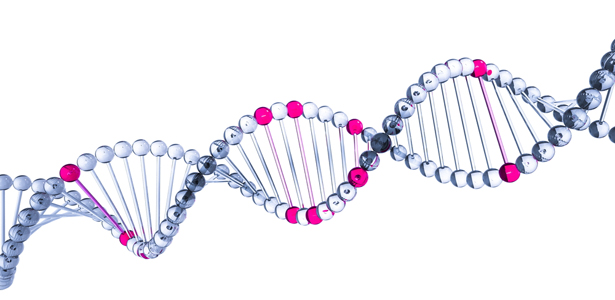If life is effectively an endless series of photocopies, as DNA is transcribed and passed on from one being to the next, then evolution is the high-stakes game of waiting for the copier to get it wrong.
Too wrong, and you’ll live burdened by a maladaptive mutation or genetic disorder. Worse, you might never live at all.
But if the flaw is wrong in exactly the right way, the incredible can happen: disease resistance, sharper eyesight, swifter feet, big brains, better beaks for Darwin’s finches.
In a paper published in the open-access journal eLife this week, researchers say they have pinpointed what may well be one of evolution’s greatest copy mess-ups yet: the mutation that allowed our ancient protozoa predecessors to evolve into complex, multi-cellular organisms. Thanks to this mutation — which was not solely responsible for the leap out of single-cellular life, but without which you, your dog and every creature large enough to be seen without a microscope might not be around — cells were able to communicate with one another and work together.
Incredibly, in the world of evolutionary biology, all it took was one tiny tweak, one gene, and complex life as we know it was born.
“It was a shock,” co-author Ken Prehoda, a biochemist at the University of Oregon, told The Washington Post. “If you asked anyone on our team if they thought one mutation was going to be responsible for this, they would have said it doesn’t seem possible.”
The discovery was made thanks to choanoflagellates — tiny balloon-shaped creatures that are our closest living unicellular cousins — and a cool bit of evolutionary time travel known as ancestral protein reconstruction, which allows scientists to resurrect the genomes of long-dead creatures based on their modern descendants’ DNA.
In this case, the reconstruction took Prehoda and his colleagues back about 600 million years, when ancient beings no bigger than a single cell swam through vast shallow seas covering what are now continents. There’s pretty much no fossil record from this period — what kind of fossil could be left by something smaller than a pinhead? — so insights into life at that time rely on researchers’ imaginations and intense scrutiny of modern DNA.
For this, the choanoflagellates were perfect. They’re single-celled organisms, but they occasionally work together in groups, swimming into a cluster with their flagella (tails) pointing outward like the rays of a sun. At the most basic level, this coordination helps the choanoflagellates eat certain kinds of food. But it’s also an example of individual cells coming together to work as one unit, kind of like — hey! — a multi-cellular organism.
Prehoda and his colleagues began to look into what genes could be responsible for allowing the choanoflagellates to work together.
“We were expecting many genes to be involved, working together in certain ways, because [the jump to multi-cellularity] seems like a really difficult thing to do,” he said.
But it turned out that only one was needed: A single mutation that repurposed a certain type of protein. Instead of working as enzymes (proteins that facilitate reactions inside the cell) the proteins were now what’s known as an interaction domain. They could communicate with and bind to other proteins, a useful skill for cells that have decided to trade the rugged individualist life for the collaboration of a group. In the wild world of pre-complex life, this development was orders of magnitude better than Twitter for getting organisms organized. Every example of cells collaborating that has arisen since — from the trilobites of 500 million years ago to the dinosaurs, woolly mammoths and you — probably relied on it or some other similar mutation.
That protein domain is now present in all animal genomes and their close unicellular relatives, according to a University of Oregon release. It’s probably wiggling around in you right now, helping your various cells keep in touch.
But the discovery of the protein offers more than just a history lesson, the researchers say. It may also have ramifications for modern medicine.
Cancer and many other diseases, Prehoda explained, can in some ways be thought of as cells that forgot that they’re part of a multi-cellular being and have stopped communicating or taking directions from the body they belong to. If that’s the case, then understanding what equips a cell with the proteins to communicate might help suss out why they stop.
“That’s a very different paradigm for thinking about diseases like cancer,” Prehoda said. “It could allow us to think about new ways to develop therapies by focusing on genes that are involved in this unicellular to multi-cellular process.”
The Washington Post, Full Article


